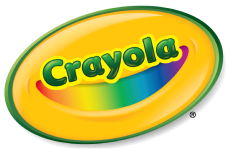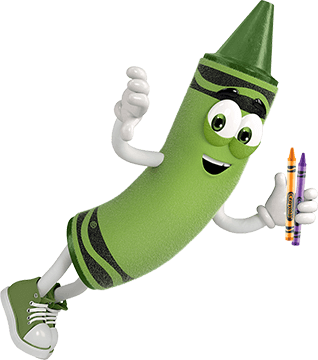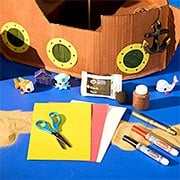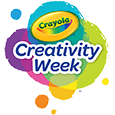Crayola® es una empresa privada y no ofrece un informe anual al público. La información financiera se considera confidencial. Obtenga más información sobre nuestra colorida empresa aquí.
Si tienes preguntas adicionales, ¡nos encantaría saber de ti! No dudes en llamarnos o enviarnos un mensaje de texto al 1-800-CRAYOLA días laborables entre las 9 AM y las 4 PM hora del Este. Si prefieres enviarnos un correo electrónico, visita nuestra página de contacto.
Preguntas relacionadas
Explora respuestas a preguntas comunes, consejos útiles para eliminar manchas e ideas creativas para aprovechar al máximo nuestros materiales de arte y recursos gratuitos.
-
We offer Crayola product catalogs online!
- US Consumers: Visit our Support Page and select Product Catalog.
- Canadian Consumers: Visit
Crayola.ca where you will find a link to the current product catalog in the Helpful Links section. While you are there, check out the colorful products offered at Crayola.ca.
-
Crayola® Model Magic® modeling compound is not waterproof. In fact, water will have a negative effect on the product. Learn more about Crayola Model Magic at Crayola.com.
-
At Crayola, we stand by the quality of our products. If you experience any issues with a Crayola-manufactured product, please reach out to us for assistance.
- USA/Canada - 1-800-CRAYOLA (800-272-9652)
- All other locations
-
What are skin tones?
Your skin tone is the genetic amount of melanin, naturally occurring dark brown or black pigments, in the outermost layer of your skin. Skin tones can change over time for various reasons.
What is your skin tone?
There are 3 traditional skin tones: Light, Medium, and Deep.
- Light or fair skin tone: Contains a small amount of melanin within the skin.
- Medium skin tone: Contains a fair amount of melanin within the skin, is a neutral color, and has a beige appearance. This skin tone is often referred to as an “olive” color.
- Deep skin tone: Contains a large amount of melanin within the skin.
What are undertones?
Undertones are the natural colors underneath the surface of your skin. Because undertones are under the surface of the skin, you can have the same skin tone as another person, but have a completely different undertone. Undertones are not based on skin tone. For instance, a light skin tone can have a warm undertone and a deep skin tone can have a cool undertone. Also, undertones remain the same, even when you tan. There are 3 traditional undertones: Rose, Almond, and Golden.
- Pink, blue, and/or red hues under the skin = Rose, pink, or cool undertone
- A mixture of warm and cool hues typically the same color as your skin tone = Almond, neutral, or olive undertone
- Peach, yellow, and/or gold hues under the skin = Golden or warm undertone
What is your undertone?
You can identify your undertone by using the color of your veins. In natural light, what color are the veins under your skin on the inside of your arm or wrist?
- Blue and/or purple veins = Rose or cool undertone
- Colorless, same color as your skin, and/or a combination of blue and green veins = Almond or neutral undertone
- Green and/or olive veins = Golden or warm undertone
Tips for selecting your Crayola® Colors of the World® skin tone crayon color:
- Check out the color panels on the side of the Colors of the World crayon box.
- Match: Use crayon box color panels or create color swatches.
- Select: Pick colors closest to your skin tone.
- Color: Draw your #TrueSelfie with your unique colors!
Another way to find your skin tone crayon is to color a small area on a piece of paper with the crayon colors closest to your skin tone. Compare the areas with the inside of your arm or wrist and select the crayon color that best matches your skin tone.
-
Consumers often suggest new color names to commemorate a special person or event. Because of the frequency, we are unable to honor these requests.
If you’d like to create a one-of-a-kind keepsake that allows you to personalize an authentic Crayola crayon label, we invite you to visit one of our Crayola Experience locations.




